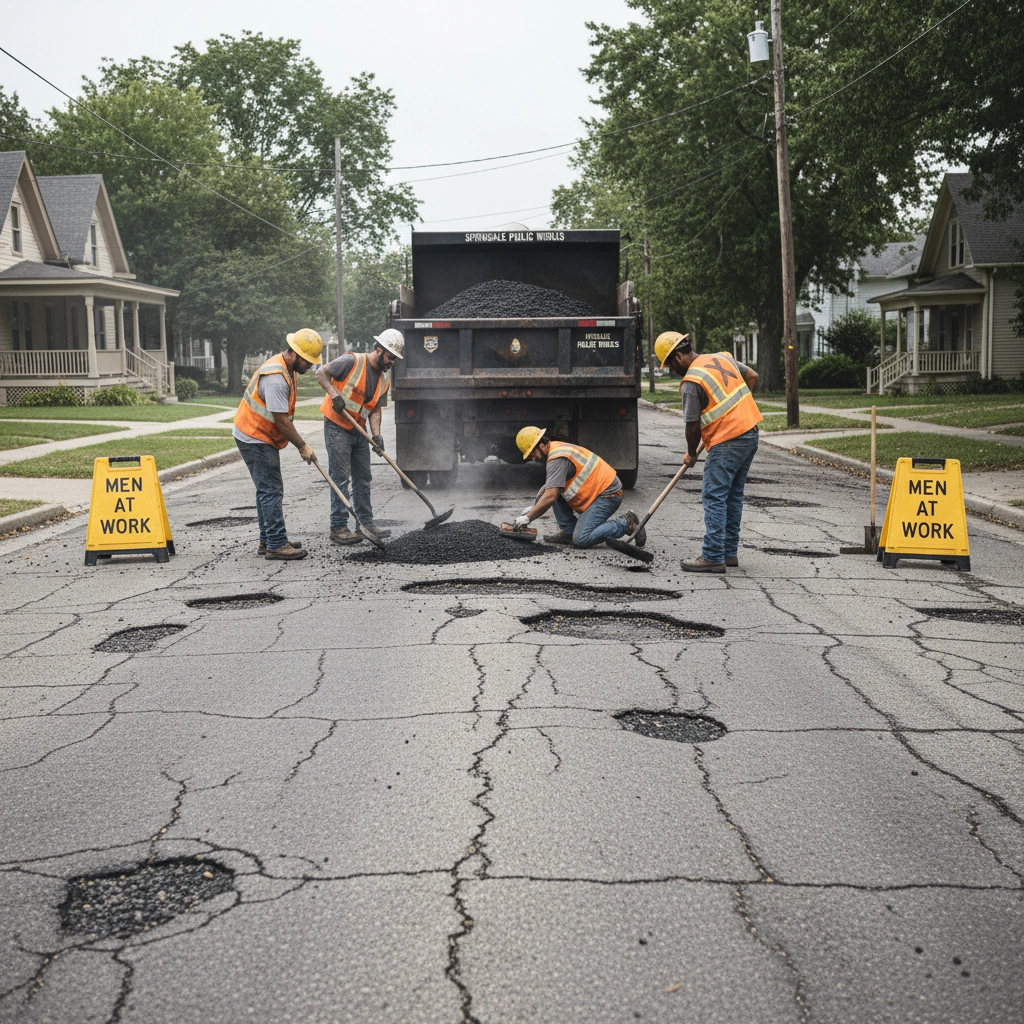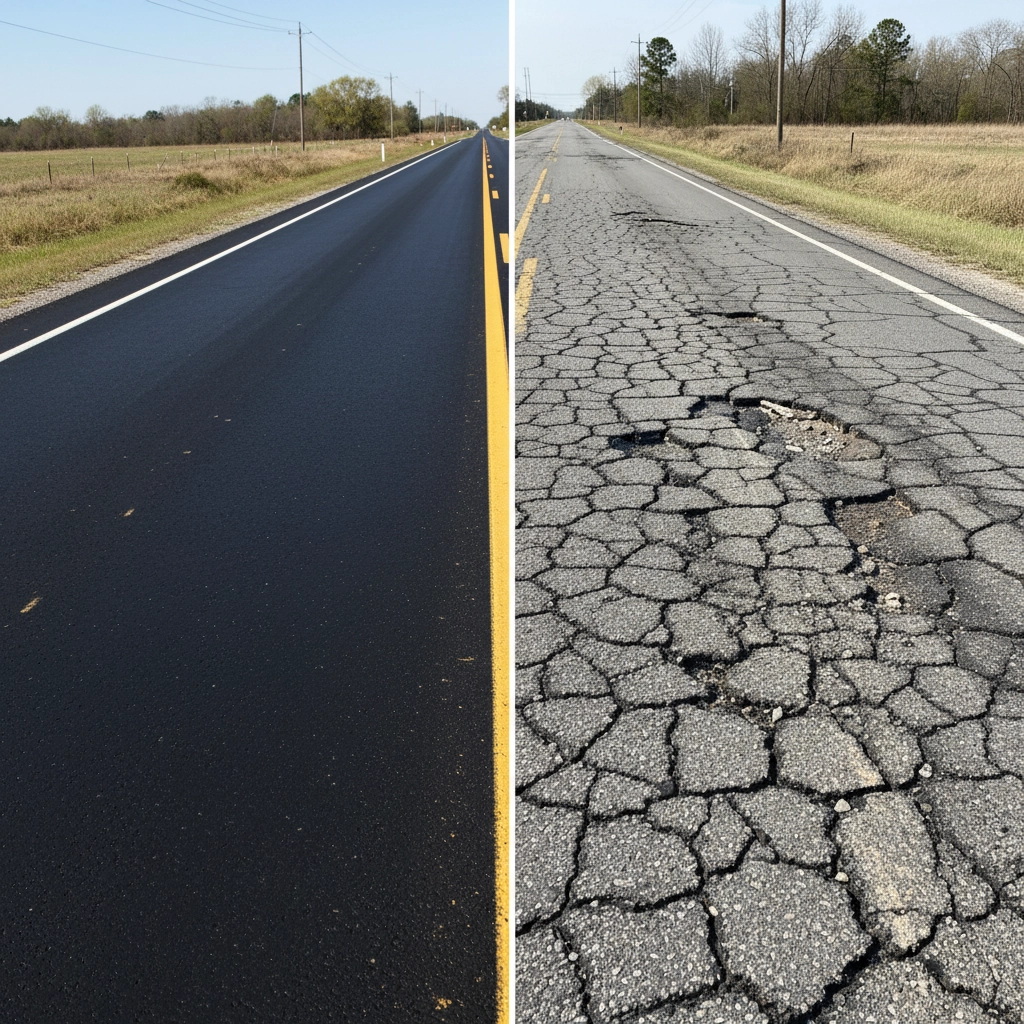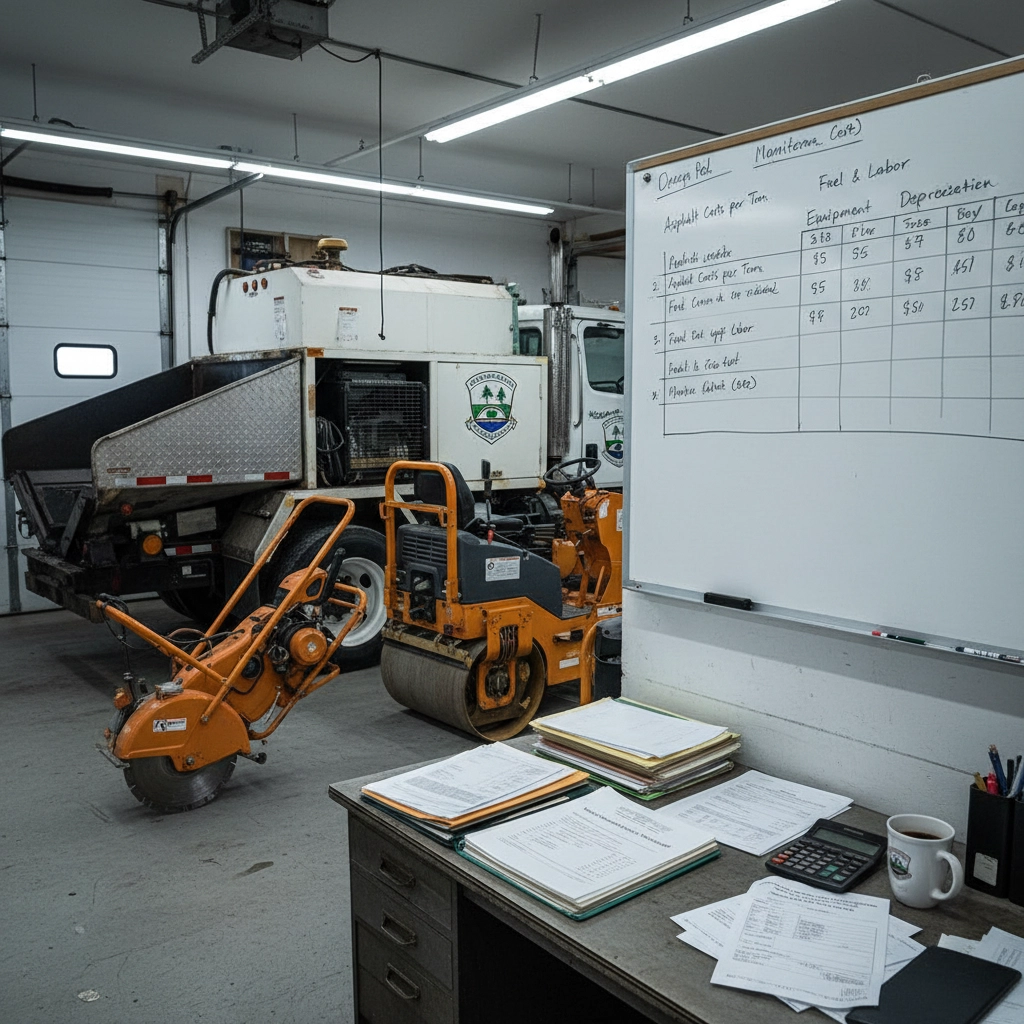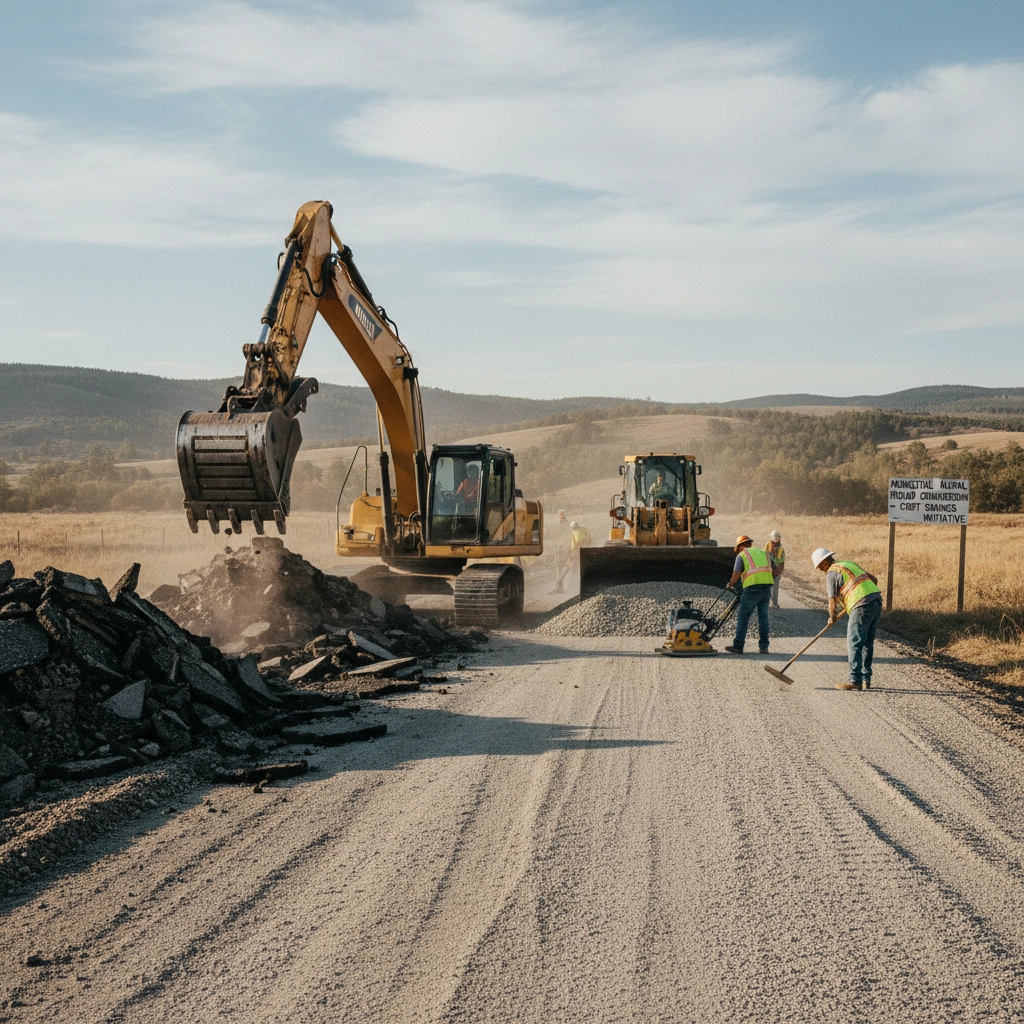Why Small Towns Struggle to Keep Up with Road Paving: The High Cost of Keeping Roads Smooth
- Community Blogger

- Sep 10
- 5 min read
Small municipalities across Maine and the United States face an escalating infrastructure crisis that threatens both fiscal stability and quality of life for residents. Road maintenance represents one of the most significant budget challenges confronting local governments, with costs that have outpaced municipal revenue growth for decades.
The scope of this challenge extends far beyond individual communities. Rural roads constitute 71% of America's total road network, yet these thoroughfares serve areas with limited tax bases and constrained municipal resources. The accumulated maintenance backlog for rural roads has reached $180 billion nationally, illustrating the magnitude of deferred infrastructure needs across small-town America.

Historical Context of Municipal Paving Decisions
Many small towns find themselves bound by infrastructure decisions made during more economically favorable periods. During the 1980s, when petroleum prices remained relatively low, numerous municipal governments initiated extensive road-paving programs. Oil serves as a primary component in asphalt production, making road construction more affordable during periods of reduced energy costs.
These paving initiatives, while beneficial for immediate transportation needs, created long-term maintenance obligations that many communities now struggle to fulfill. Once residents experience paved road surfaces, expectations for continued maintenance increase, placing sustained pressure on municipal budgets regardless of available funding.
The transition from gravel to paved surfaces fundamentally altered municipal responsibility structures. Gravel roads, while requiring regular maintenance, present predictable costs and can be maintained using standard municipal equipment and personnel. Paved surfaces demand specialized materials, equipment, and expertise that exceed the capabilities of many small-town public works departments.
Current Cost Analysis for Road Maintenance
Contemporary road maintenance costs vary significantly based on surface type, traffic volume, and environmental conditions. A two-inch asphalt overlay for two lanes of local street requires approximately $186,000 per mile in materials alone, excluding labor, equipment, and preparation costs.
Annual maintenance expenses for roads range dramatically across different categories:
Basic local roads: $782 to $1,528 per mile annually
Municipal streets: $4,429 to $10,440 per mile annually
State highways: Up to $208,736 per mile annually
These figures reflect maintenance only and do not account for complete reconstruction or major rehabilitation projects. Rural roads face additional cost factors due to environmental challenges, including erosion-prone surfaces, mountainous terrain, and extended transportation distances for materials and equipment.

The maintenance cost differential between paved and unpaved surfaces creates significant long-term budget implications. While initial paving costs appear substantial, the ongoing obligation to maintain asphalt surfaces often exceeds the total cost of gravel road maintenance over extended periods.
Municipal Budget Constraints and Tax Implications
Road maintenance budgets in small municipalities have remained static or decreased over recent decades, while material, labor, and equipment costs have increased substantially. This disparity creates a widening gap between infrastructure needs and available resources.
The financial strain manifests in several ways:
Direct Tax Impact: Municipalities must balance road maintenance against other essential services, including fire protection, police services, and waste management. Increased road maintenance costs often necessitate property tax increases or reduction of alternative municipal services.
Deferred Maintenance Costs: Postponing necessary road work results in exponentially higher future expenses. A road requiring $186,000 in overlay work may need complete reconstruction costing $500,000 or more if maintenance is deferred beyond the pavement's useful life.
Equipment and Personnel Requirements: Maintaining paved roads requires specialized equipment including pavement saws, hot-patch equipment, and compaction machinery. Small municipalities often lack both the equipment and trained personnel necessary for effective pavement maintenance.
Many communities resort to basic maintenance approaches such as pothole patching, which provides temporary solutions while underlying pavement deterioration continues. This reactive maintenance strategy proves more expensive long-term than proactive surface treatments.

The Unpaving Solution: Converting Roads to Gravel
Faced with unsustainable maintenance costs, numerous municipalities have adopted unpaving strategies, converting paved roads back to gravel surfaces. This approach addresses budget constraints while maintaining road functionality, though it requires careful consideration of community impact and long-term planning.
Benefits of road unpaving include:
Reduced Annual Costs: Gravel road maintenance typically costs significantly less than asphalt maintenance over time. Municipal crews can perform most gravel road maintenance using standard equipment and materials.
Predictable Maintenance Schedule: Gravel roads require regular but predictable maintenance activities including grading, dust control, and periodic re-graveling. These activities can be scheduled and budgeted more effectively than emergency pavement repairs.
Extended Equipment Life: Municipal equipment experiences less wear when maintaining gravel surfaces compared to asphalt work, reducing replacement costs and extending service intervals.
Local Resource Utilization: Gravel maintenance often utilizes locally available materials, reducing transportation costs and supporting regional suppliers.
Drawbacks of unpaving include increased dust, potential vehicle damage, and resident dissatisfaction. Some communities implement chip-seal coatings as a compromise solution, providing improved surfaces lasting approximately two years compared to traditional asphalt roads lasting seven to nine years.
Alternative Maintenance Strategies
Small municipalities employ various strategies to manage road maintenance costs while preserving surface quality. These approaches balance fiscal responsibility with infrastructure preservation:
Preventive Maintenance Programs: Regular surface treatments including crack sealing and surface applications can extend pavement life significantly. These treatments cost substantially less than reconstruction while maintaining road functionality.
Regional Cooperation: Municipal partnerships for equipment sharing, bulk material purchasing, and shared expertise reduce individual community costs while maintaining service quality.
Grant Funding Programs: Federal and state grant programs provide supplemental funding for municipal road projects. However, these programs often require matching funds and compliance with specific standards that may exceed local capabilities.
Lifecycle Cost Analysis: Evaluating total ownership costs over 20-30 year periods helps municipalities make informed decisions about surface types and maintenance strategies.

Long-term Considerations for Municipal Planning
Effective road maintenance planning requires municipalities to evaluate current conditions, project future needs, and align infrastructure decisions with fiscal capacity. This planning process should consider population trends, economic development goals, and regional transportation needs.
Key planning elements include:
Surface Type Evaluation: Not all roads require paved surfaces. Low-traffic residential streets may function adequately with gravel surfaces, while main thoroughfares and emergency routes may justify paving costs.
Maintenance Schedule Development: Systematic evaluation and treatment of road surfaces prevents emergency situations and reduces long-term costs.
Budget Planning: Establishing dedicated road maintenance reserves helps municipalities address periodic major maintenance needs without impacting general operations.
Community Communication: Transparent discussion of road maintenance costs and options helps residents understand municipal decisions regarding surface types and maintenance priorities.
The challenge of maintaining road infrastructure in small communities reflects broader rural economic realities. Limited tax bases must support extensive infrastructure networks that serve as crucial economic and safety lifelines. Successful municipalities develop realistic approaches that balance infrastructure needs with fiscal constraints while maintaining essential transportation services for residents and businesses.
For communities like Buckfield, understanding these cost dynamics enables informed decision-making about road maintenance priorities and long-term infrastructure planning. The Town of Buckfield Public Works Department in conjunction with the Road Committee continue to evaluate maintenance strategies that provide reliable transportation infrastructure while maintaining fiscal responsibility to taxpayers.


Comments